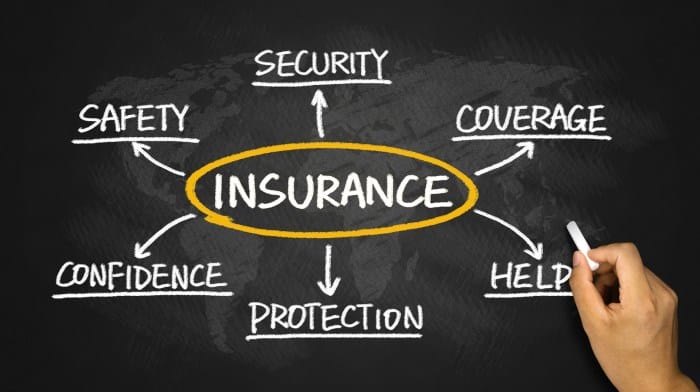Venturing into the world of buying a used car can be both exciting and daunting. With careful consideration and a strategic approach, you can find a reliable vehicle that meets your needs and budget. This guide will provide invaluable tips to help you navigate the process of buying a used car and securing the right insurance coverage.
From assessing the vehicle’s condition to understanding insurance options, we’ll cover essential steps to ensure a smooth and informed purchase. Whether you’re a first-time car buyer or a seasoned pro, this guide will equip you with the knowledge and insights to make informed decisions.
Assessing Vehicle Condition

Buying a used vehicle requires careful assessment to ensure you make an informed decision. A thorough inspection can help you identify potential issues and avoid costly surprises down the road.
When inspecting a used vehicle, pay attention to the following:
Signs of Wear and Damage
Look for signs of wear and tear on the vehicle’s exterior, such as scratches, dents, or rust spots. Examine the tires for signs of uneven wear or balding. Check the windshield for cracks or chips.
Mechanical Issues
Listen for unusual noises or vibrations when the vehicle is running. Check the engine oil for its color and consistency. Look for leaks underneath the vehicle. Test the brakes, steering, and suspension for proper functioning.
Test Drive
Take the vehicle for a test drive to assess its performance. Pay attention to how the vehicle handles, accelerates, and brakes. Be sure to drive on different types of roads, including highways, city streets, and bumpy roads.
Negotiation and Purchase

Before you make an offer on a used vehicle, do your research to determine its fair market value. This will give you a good starting point for negotiations. Be prepared to walk away from the deal if the seller is unwilling to meet your price.
Understanding the Purchase Agreement
When you’ve agreed on a price, it’s time to sign the purchase agreement. This document should include the following information:
- The purchase price of the vehicle
- The make, model, and year of the vehicle
- The vehicle identification number (VIN)
- The odometer reading
- The names of the buyer and seller
- The date of the sale
Make sure you understand all of the terms and conditions of the purchase agreement before you sign it. If you have any questions, ask the seller or a lawyer for clarification.
Securing a Fair Deal
Here are a few tips for securing a fair deal when buying a used vehicle:
- Get a vehicle history report. This report will provide you with information about the vehicle’s past, including any accidents or repairs.
- Have the vehicle inspected by a mechanic. This inspection will help you identify any potential problems with the vehicle.
- Be prepared to walk away from the deal. If the seller is unwilling to meet your price or if you’re not comfortable with the condition of the vehicle, don’t be afraid to walk away.
Avoiding Potential Pitfalls
There are a few potential pitfalls to avoid when buying a used vehicle. These include:
- Buying a vehicle that has been in an accident.
- Buying a vehicle that has been flooded.
- Buying a vehicle that has been stolen.
- Buying a vehicle that has been tampered with.
By doing your research and being prepared, you can avoid these pitfalls and get a good deal on a used vehicle.
Insurance Considerations

When purchasing a used vehicle, it’s crucial to consider insurance coverage to protect yourself financially in case of accidents or damages. Understanding the types of insurance available, factors that influence rates, and comparing quotes from different providers can help you secure the best coverage at an affordable price.
Types of Insurance Coverage
There are various types of insurance coverage available for used vehicles, each providing different levels of protection:
Liability Insurance
Covers damages caused to other parties’ property or injuries in an accident you are responsible for.
Collision Coverage
Protects your vehicle from damages resulting from collisions with other vehicles or objects.
Comprehensive Coverage
Provides coverage for damages caused by events other than collisions, such as theft, vandalism, or natural disasters.
Personal Injury Protection (PIP)
Covers medical expenses and lost wages for you and your passengers in an accident, regardless of fault.
Uninsured/Underinsured Motorist Coverage
Protects you from financial losses if you’re involved in an accident with a driver who doesn’t have insurance or has insufficient coverage.
Factors Influencing Insurance Rates
Several factors influence the insurance rates for used vehicles, including:
Vehicle’s Age and Condition
Older vehicles with higher mileage may carry higher rates due to increased risk of mechanical problems and accidents.
Vehicle’s Make and Model
Some vehicles are more expensive to insure than others based on their safety features, repair costs, and theft rates.
Usage
If you use your vehicle for business or commute long distances, you may pay higher rates due to increased exposure to risks.
Driver’s Age, Experience, and Driving History
Younger drivers with less experience and a history of accidents or traffic violations typically pay higher rates.
Location
Insurance rates vary by region based on factors like traffic congestion, crime rates, and weather conditions.
Comparing Insurance Quotes
To find the best insurance coverage at an affordable price, it’s essential to compare quotes from multiple providers. Here are some tips:
Get Quotes Online
Many insurance companies offer online quote comparison tools, allowing you to quickly compare rates and coverage options.
Contact Insurance Agents
Speak with independent insurance agents who represent multiple companies to obtain personalized quotes based on your specific needs.
Consider Bundling Policies
If you have multiple insurance policies, such as home and auto, bundling them with the same provider may result in lower rates.
Review Discounts
Ask about available discounts, such as those for safe driving, multiple vehicles, or installing anti-theft devices.
Adjust Coverage Limits
While it’s essential to have adequate coverage, increasing your coverage limits unnecessarily can result in higher premiums.
Vehicle Maintenance

Regular maintenance is crucial for preserving the condition and performance of a used vehicle, ensuring its longevity and safety. By following a proper maintenance schedule, you can identify and address potential issues early on, preventing costly repairs and breakdowns. Additionally, a well-maintained vehicle retains its value better, making it a more attractive option for resale.
Maintenance Schedule
Creating a maintenance schedule is essential for keeping your used vehicle in top condition. Refer to the owner’s manual for specific recommendations based on the vehicle’s age, mileage, and driving conditions. Common maintenance tasks include oil changes, tire rotations, brake inspections, and fluid checks.
Adhering to the recommended maintenance schedule helps ensure your vehicle operates smoothly and efficiently, reducing the risk of unexpected breakdowns.
Genuine Parts and Authorized Service Centers
Using genuine parts and authorized service centers for maintenance and repairs is highly recommended. Genuine parts are specifically designed for your vehicle, ensuring optimal fit, performance, and durability. Authorized service centers have trained technicians who are familiar with your vehicle’s specific needs and have access to the latest diagnostic tools and equipment.
While using non-genuine parts or unauthorized service centers may seem like a cost-saving measure, it can compromise your vehicle’s performance, safety, and reliability in the long run.
Safety Features

When purchasing a used vehicle, considering safety features is paramount. These features play a crucial role in safeguarding you and your passengers on the road.
Essential Safety Features
Look for vehicles equipped with essential safety features, including:
- Airbags: Front, side, and curtain airbags provide protection in the event of a collision.
- Anti-lock Brakes (ABS): ABS prevents wheels from locking during braking, ensuring control and stability.
- Electronic Stability Control (ESC): ESC helps maintain control by detecting and correcting skids.
- Tire Pressure Monitoring System (TPMS): TPMS alerts you when tire pressure is low, preventing accidents caused by underinflated tires.
Benefits of a High Safety Rating
Choosing a vehicle with a high safety rating from reputable organizations like the National Highway Traffic Safety Administration (NHTSA) or the Insurance Institute for Highway Safety (IIHS) offers several benefits:
- Enhanced Protection: Vehicles with high safety ratings are designed to withstand crashes and protect occupants more effectively.
- Lower Insurance Premiums: Many insurance companies offer discounts for vehicles with high safety ratings, saving you money on premiums.
- Peace of Mind: Knowing that you and your loved ones are traveling in a vehicle with advanced safety features provides peace of mind.
Extended Warranties and Service Contracts

An extended warranty or service contract for a used vehicle can provide peace of mind and protect you from unexpected repair costs. These contracts typically cover a wide range of components and systems, offering various levels of protection.
Benefits of an Extended Warranty or Service Contract
Protection Against Unexpected Repairs
Extended warranties and service contracts help cover the cost of repairs or replacements for covered components that fail due to normal wear and tear or mechanical failure.
Peace of Mind
Knowing that you’re protected from unexpected repair costs can give you peace of mind, especially if you’re buying a used vehicle with higher mileage or an older model.
Increased Resale Value
A vehicle with an extended warranty or service contract may have a higher resale value, as it demonstrates that the vehicle has been well-maintained and is less likely to have unexpected repair costs in the future.
Types of Coverage Available
Extended warranties and service contracts vary in terms of the components and systems they cover, the length of coverage, and the deductible amount. Some common types of coverage include:
Powertrain Warranty
Covers the engine, transmission, and drivetrain components.
Bumper-to-Bumper Warranty
Covers most major components of the vehicle, including the engine, transmission, brakes, steering, and suspension.
Exclusionary Warranty
Covers all components of the vehicle except for those specifically excluded in the contract.
Maintenance Contract
Covers routine maintenance services, such as oil changes, tire rotations, and brake inspections.
Factors to Consider When Choosing a Warranty or Service Contract
Vehicle Age and Mileage
The age and mileage of your vehicle will impact the cost and availability of extended warranties and service contracts.
Type of Coverage
Consider the level of coverage you need based on your driving habits, the condition of the vehicle, and your budget.
Length of Coverage
Extended warranties and service contracts typically range from one to five years or more. Choose a contract that provides adequate coverage for the duration of your ownership.
Deductible Amount
The deductible is the amount you pay out of pocket before the warranty or service contract coverage kicks in. Choose a deductible that you can afford.
Reputation of the Warranty or Service Contract Provider
Research the reputation of the company offering the warranty or service contract to ensure they have a good track record of honoring claims.
Tips for Negotiating the Best Terms and Conditions
Shop Around
Get quotes from multiple warranty and service contract providers to compare coverage, prices, and terms.
Read the Fine Print
Carefully read the terms and conditions of the warranty or service contract before signing to understand what is covered, what is excluded, and the claims process.
Negotiate the Price
Don’t be afraid to negotiate the price of the extended warranty or service contract. Many providers are willing to offer discounts or special promotions.
Consider Bundling Warranties
If you’re purchasing a vehicle from a dealership, ask about bundling the extended warranty or service contract with other products or services, such as gap insurance or roadside assistance, to potentially save money.
Post-Purchase Care

Maintaining a used vehicle requires careful attention to its condition and performance. By keeping detailed records of maintenance and repairs, you can ensure the vehicle’s longevity and value. Additionally, following the manufacturer’s recommended maintenance schedule and keeping the vehicle clean and well-maintained will contribute to its overall performance and appearance.
Detailed Maintenance Records
Maintaining detailed records of all maintenance and repairs performed on the used vehicle is crucial for several reasons. Firstly, it provides a comprehensive history of the vehicle’s condition, making it easier to identify any potential issues or areas that require attention.
Secondly, it helps you stay organized and ensures that all necessary maintenance and repairs are performed on time, preventing costly breakdowns or repairs in the future. Thirdly, it can be beneficial when selling the vehicle, as potential buyers may be more interested in a well-maintained vehicle with a detailed maintenance history.
Vehicle Cleanliness and Maintenance
Keeping the vehicle clean and well-maintained is essential for preserving its value and performance. Regular washing and waxing protect the paint and exterior from the elements, preventing rust and deterioration. Additionally, keeping the interior clean and free of debris helps maintain a pleasant driving environment and prevents the accumulation of dirt and grime, which can lead to unpleasant odors and potential health issues.
Manufacturer’s Recommended Maintenance Schedule
Following the manufacturer’s recommended maintenance schedule is crucial for ensuring the vehicle’s longevity and performance. This schedule Artikels specific maintenance tasks and intervals, such as oil changes, tire rotations, and brake inspections. By adhering to this schedule, you can ensure that the vehicle is receiving the necessary care and maintenance to operate safely and efficiently.
Last Word

Buying a used car and securing insurance can be a complex process, but with the right approach, you can find a vehicle that fits your needs and budget while protecting yourself financially. Remember to thoroughly inspect the vehicle, research its history, negotiate the best price, and compare insurance quotes to find the best coverage at an affordable rate.
By following the tips and advice provided in this guide, you’ll be well-equipped to make an informed decision when purchasing a used car and obtaining the appropriate insurance coverage. Happy car hunting and safe driving!
Q&A
Q: What are some common signs of wear and damage to look for when inspecting a used car?
A: Keep an eye out for uneven tire wear, rust spots, leaks, worn-out brakes, and any signs of previous accidents or repairs.
Q: How can I compare insurance quotes from different providers to find the best coverage at an affordable price?
A: Utilize online comparison tools, contact insurance companies directly, and consider bundling multiple policies to potentially save money.
Q: What are some tips for negotiating the best price with the seller of a used car?
A: Research the car’s market value, be prepared to walk away if the price is too high, and consider making a cash offer to potentially secure a better deal.
Q: What are some essential safety features to look for when buying a used car?
A: Airbags, anti-lock brakes, electronic stability control, lane departure warning, and blind-spot monitoring are some key safety features to consider.
Q: How can I maintain the condition and performance of my used car over time?
A: Follow the manufacturer’s recommended maintenance schedule, use genuine parts for repairs, and keep detailed records of all maintenance and repairs performed.



